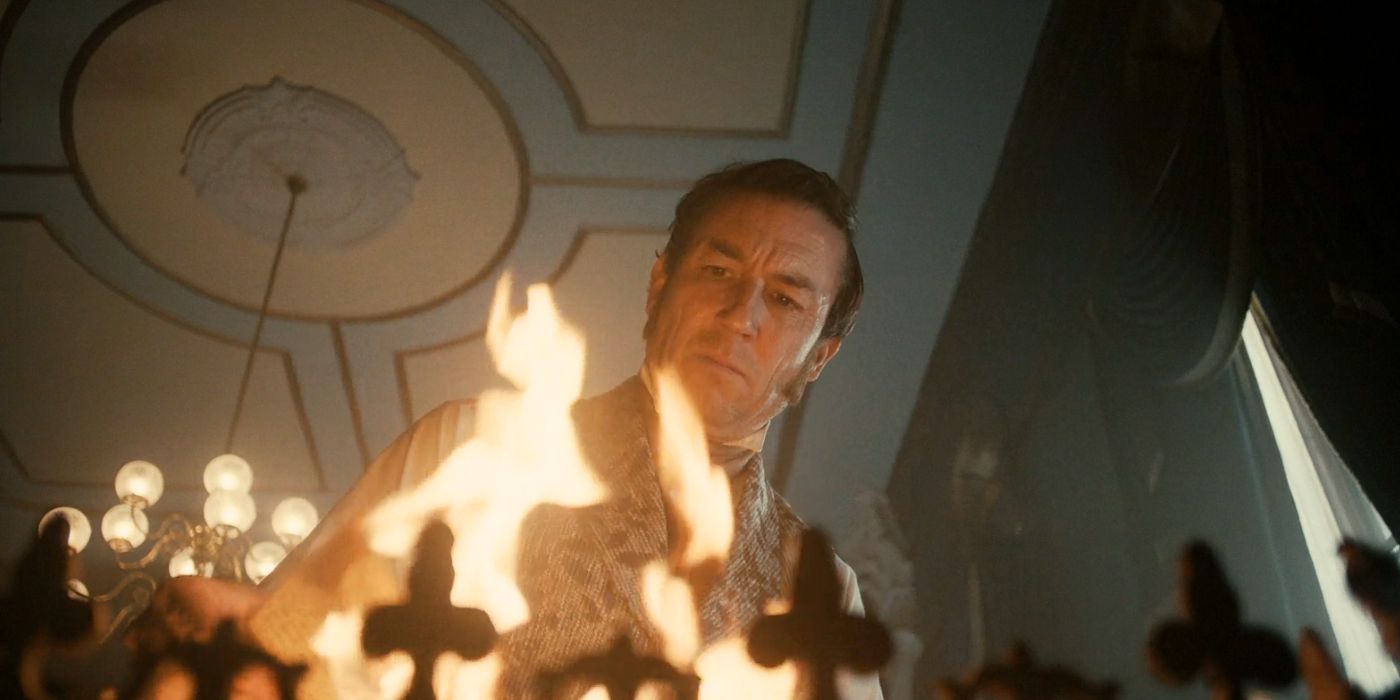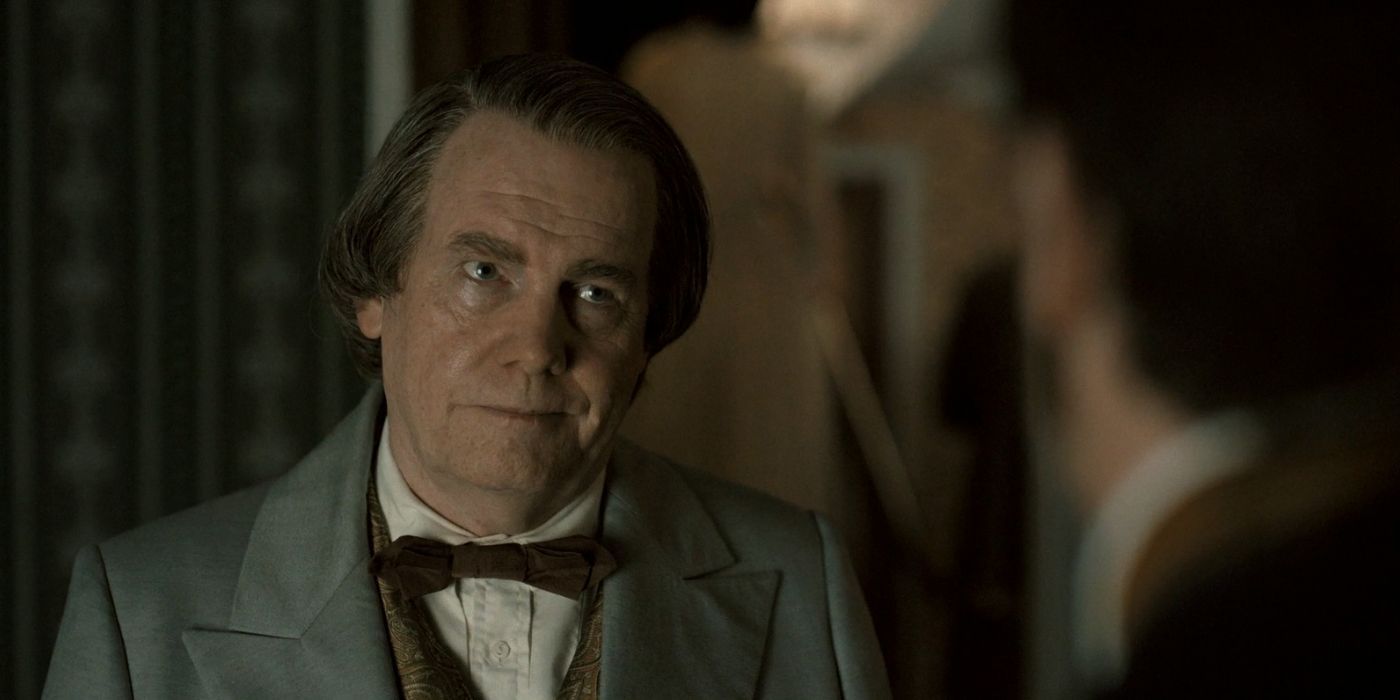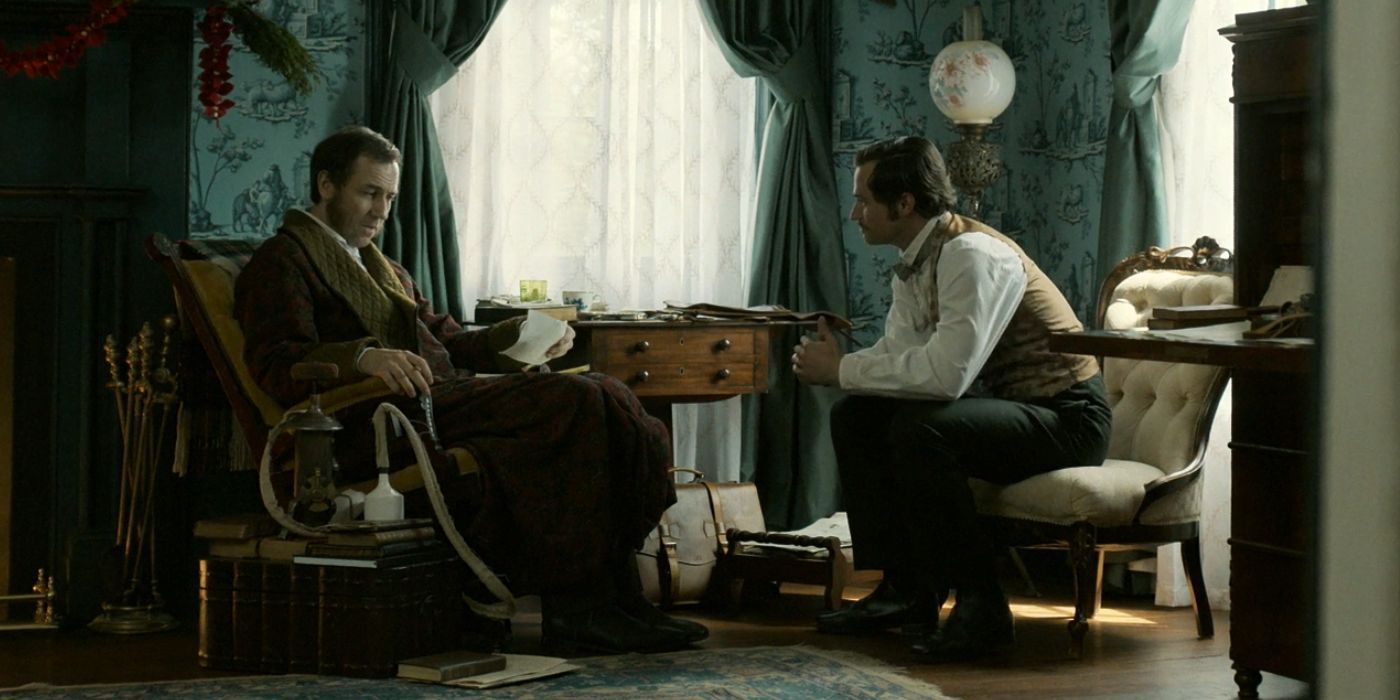Summary
- The grand conspiracy case failed due to unreliable witness testimony casting doubt on the evidence provided by Stanton.
- Missing pages from John Wilkes Booth's diary were burned by Stanton, leading to conspiracy theories about his potential involvement in the assassination.
- Mannhunt was really about the long-term effects of Booth's murder of Lincoln, particularly regarding Reconstruction.
The series finale of Manhunt saw Secretary of War Edwin Stanton attempt to bring justice to all those involved with John Wilkes Booth's assassination of Abraham Lincoln, with varying degrees of success. Manhunt episode 7 largely focused on the trial that began less than a month after Lincoln's death, during which Stanton brought charges of grand conspiracy against the last remnants of the Confederacy. While the testimony of brave individuals like Mary Simms and her brother Milo brought the conspiracy into focus, less reliable testimonials cast enough doubt on the evidence for the grand conspiracy to be declared inconclusive.
That was not the case for some of Booth's accomplices, like David Herold and Dr. Samuel Mudd. Herold, Lewis Powell, Mary Surratt and George Atzerodt all received a death sentence, while Mudd received life imprisonment. With the trial concluded, Stanton's attention shifted to Reconstruction, and more specifically to the man responsible for foiling it in President Andrew Johnson. Their differing viewpoints finally came to a head when Johnson attempted to remove Stanton from office, which resulted in Johnson's eventual impeachment. While Stanton continued to push forward, Johnson's vindictiveness prevented the country from moving forward as Lincoln originally desired.

Manhunt: What Really Happened To The Body Of John Wilkes Booth In Real Life?
Although Manhunt depicts the ultimate fate of John Wilkes Booth in one way, the historical truth may be quite different from the fictional portrayal.Why Stanton’s Grand Conspiracy Case Failed
The testimony of one unreliable witness played a major role.
As detailed in Manhunt episode 6, Stanton and his allies knew going into the trial that grand conspiracy charges were probably too ambitious for the concrete evidence that they could provide. Their case would be made up of largely circumstantial evidence, and reliant upon first-person testimony and coded messages. It seemed as though they had a major break when Sanford Conover (Josh Stewart), the double agent who worked for both Agent Lafayette Baker (Patton Oswalt) and George N. Sanders (Anthoyn Marble), produced a letter from Jefferson Davis that seemingly confirmed the direct link between the Confederate Secret Service and Booth.
George Sanders was not directly named in the Lincoln assassination trial as he was in Manhunt; rather, he was a suspected member of the "Confederate Clique" in Montreal.
Unfortunately for Stanton, Conover's testimony was largely invalidated by the defense for the conspirators. He was caught confusing dates, which was the opening needed to question the letter's validity given his status as a master spy and forger with seemingly no true loyalty. As opposed to being Stanton's "star witness", Conover cast a shadow on the validity of the entire conspiracy. While the special judges admitted that they believed Jefferson Davis was ultimately behind the assassination, they were unable to declare a guilty verdict for Davis, George Sanders, and John Surratt, Jr. "due to tainted evidence and technicalities."
The Significance of Mary & Milo Simms’ Testimonies Against Samuel Mudd
The two former slaves embodied all the brave men and women who testified in the trial.
Like the real Mary Simms, the Mary Simms depicted in Manhunt played a pivotal role in ensuring that the man who plagued her both as a slaver and an employer, Dr. Samuel Mudd, received a just punishment for his role in Lincoln's assassination and Booth's subsequent flight south. Her brother's role in the show was less historically accurate, although his role was more of an amalgam of several different former slaves who testified in the conspirator trial. Mary Simms is also shown providing Louis Weichmann with the courage to reveal everything he knew, which ultimately resulted in a much stronger case for the connection between Booth and the Surratts.
What Was In Booth’s Missing Diary Pages?
The real pages were lost to history, but Manhunt provides a potential answer.
In Manhunt episode 6, Edwin Stanton is directly shown tearing pages out of Booth's diary and burning them. The implication is that there was some sort of incriminating information on those pages that Stanton did not want revealed to the public. The missing pages are indeed historically accurate, although there is debate over how many pages were torn out of Booth's diary. Regardless of the number of pages, Manhunt doubled down on Stanton's involvement in their removal by having his assistant, Thomas Eckert, note that he had Stanton's hearth cleaned out, tacitly implying that he removed all traces of the pages.
If the public believed that Stanton or Lincoln had ordered the assassination of Davis first, that could galvanize the Confederacy all over again.
The pages have never been recovered, which has led to the rise of many different conspiracy theories. There is confusion over who had Booth's diary and for how long after Everton Conger removed it from Booth's body the night he died, implicating Stanton, Lafayette Baker and Conger himself in different capacities. Manhunt shows Stanton burning the pages, which gives credence to one of the most popular conspiracy theories: that Stanton himself was involved in the assassination somehow.
That clashes violently with how Stanton is presented throughout the show, so that seems like an incorrect assumption. The most likely explanation was already addressed; Stanton ordered the assassination of Jefferson Davis a year before, which is what spurred Booth's assassination of Lincoln. Such an order would almost certainly have involved Eckert, explaining why he helped Stanton dispose of the ashes that might have revealed Booth's motive. If the public believed that Stanton or Lincoln had ordered the assassination of Davis first, that could galvanize the Confederacy all over again, while also putting a permanent stain on Stanton's reputation.
Why President Andrew Johnson Removed Stanton From Office
The Confederate-sympathizing President violated the law by replacing Stanton.
Simply put, Andrew Johnson removed Edwin Stanton because he threatened his own plan for Reconstruction. While Lincoln, and therefore Stanton, sought to fully integrate freedmen and freedwomen into the Union with the Reconstruction Amendments, the former slave owner Johnson had no such intentions. His Confederate sympathies and racist tendencies yielded a Reconstruction plan that saw freed individuals treated little better than slaves, which he hid under the guise of not wanting to cause too much "unrest" in Manhunt. By removing Stanton as Secretary of War, he removed Lincoln's Reconstruction plan so that he could properly implement his own.
Andrew Johnson was just one vote short of the 2/3 majority needed to convict him in his impeachment trial, which would have resulted in his removal from the office of the President.
What Happened To Edwin Stanton After Manhunt
The former Secretary of War's fight for justice was unfortunately short-lived.
In one of Manhunt's final dramatic scenes, Edwin Stanton barricades himself in his office rather than allow himself to be removed by Johnson, which is true to history. Johnson's unlawful removal of Stanton eventually led to his impeachment, and Stanton was reinstated in short order. With Johnson remaining in office, however, he was never able to implement Reconstruction as Lincoln envisioned it. He sought an alternative means to change the country if he couldn't do it through the executive branch; he aspired to become a Supreme Court judge, which would allow him to affect real change across the country without Johnson's meddling.
As shown in Manhunt, Edwin Stanton did receive a nomination to the Supreme Court under President Ulysses S. Grant, which he accepted. Unfortunately, the real Edwin Stanton died before he was able to assume his position. Manhunt creator Monica Beletsky made a point to show the severity of Stanton's asthma throughout the show, and it was in fact respiratory failure that caused his death. Stanton's work and legacy was eventually realized in the form of the Reconstruction Amendments (13th, 14th and 15th), which abolished slavery, granted all people citizenship and equal protection under the law, and gave all citizens the right to vote.




